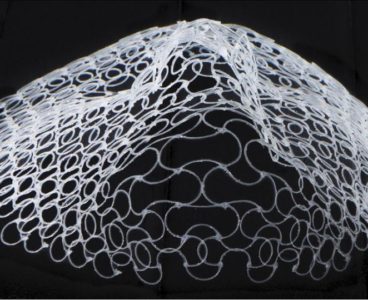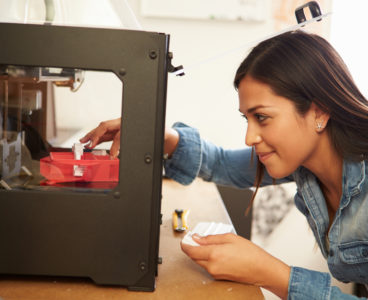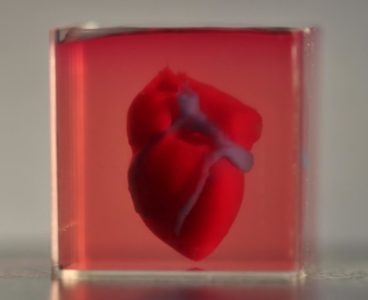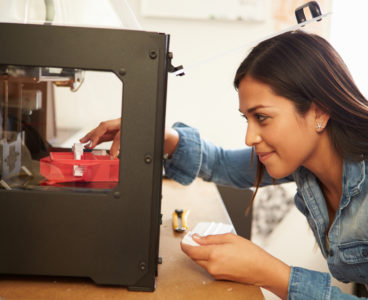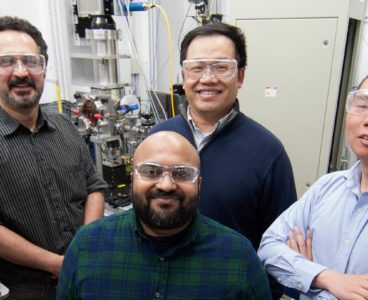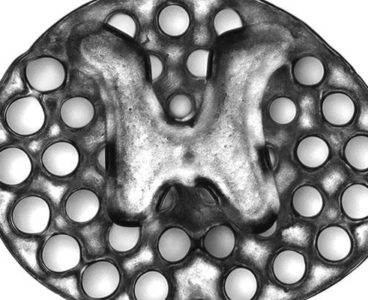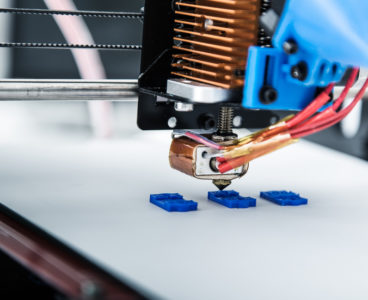VELO3D and Honeywell Aerospace, a leading user of Additive Manufacturing (AM) technologies with extensive knowledge across various platforms and applications, have announced a partnership to qualify VELO3D’s Sapphire system as a viable manufacturing platform for 3D print production of aircraft components. The Sapphire system was selected for its unique capabilities for building highly complex geometries…
Support structures: the need, impact, and elimination strategies
A Q&A with David Bentley, Protolabs Digital manufacturing leader Protolabs has invested heavily in additive manufacturing equipment, with a concentration in laser powder-bed fusion (LPBF) technology. The company recently purchased their first Sapphire metal AM machine from Velo3D to explore its advanced SupportFree capabilities. Since the earliest days of additive manufacturing (AM), support structures have…
‘Buildings’ in human bone may hold key to stronger 3D-printed lightweight structures
What do bones and 3D-printed buildings have in common? They both have columns and beams on the inside that determine how long they last. Now, the discovery of how a “beam” in human bone material handles a lifetime’s worth of wear and tear could translate to the development of 3D-printed lightweight materials that last long…
Shape-shifting structures take the form of a face, antenna
3D Printed Artificial Corneas Similar to Human Ones
When a person has a severely damaged cornea, a corneal transplant is required. However, there are 2,000 patients waiting for the cornea donation in the country as of 2018 and they wait for 6 or more years on average for the donation. For this reason, many scientists have put their efforts in developing an artificial…
3D-Printed ‘Hyperelastic Bone’ May Help Generate New Bone For Skull Reconstruction
3D-Printed, Liquid Device Could Automate Chemical Synthesis
Researchers Use 3D Printer to Print Glass
Scientists Create First-Ever 3D Printed Heart
Using human cells, Tel Aviv University (TAU) researchers have achieved a major breakthrough by developing a biologically personalized bioink and producing the first ever-3D printed heart. “This is the first time anyone anywhere has successfully engineered and printed an entire heart replete with cells, blood vessels, ventricles and chambers,” Tal Dvir, a professor in TAU’s…
Researchers 3D Print Metamaterials With Novel Optical Properties
A team of engineers at Tufts University has developed a series of 3-D printed metamaterials with unique microwave or optical properties that go beyond what is possible using conventional optical or electronic materials. The fabrication methods developed by the researchers demonstrate the potential, both present and future, of 3-D printing to expand the range of…
Improving 3D-Printed Prosthetics and Integrating Electronic Sensors
With the growth of 3D printing, it’s entirely possible to 3D print your own prosthetic from models found in open-source databases. But those models lack personalized electronic user interfaces like those found in costly, state-of-the-art prosthetics. Now, a Virginia Tech professor and his interdisciplinary team of undergraduate student researchers have made inroads in integrating electronic…
3D-Printed Transparent Skull Provides a Window to the Brain
Researchers at the University of Minnesota have developed a unique 3D-printed transparent skull implant for mice that provides an opportunity to watch activity of the entire brain surface in real time. The device allows fundamental brain research that could provide new insight for human brain conditions such as concussions, Alzheimer’s and Parkinson’s disease. The research…
3D Printed Tissues May Keep Athletes in Action
Bioscientists are moving closer to 3D-printed artificial tissues to help heal bone and cartilage typically damaged in sports-related injuries to knees, ankles and elbows. Scientists at Rice University and the University of Maryland reported their first success at engineering scaffolds that replicate the physical characteristics of osteochondral tissue – basically, hard bone beneath a compressible…
Researchers 3D Print Human Cells Using Magnets
A new 3D printing technique could allow researchers to create artificial tumors to test new drugs and therapies, ultimately leading to better and more personalized medicine. Engineers from McMaster University believe the new method could enable them to create realistic 3D cell clusters with several layers of cells to better mimic the conditions inside of…
Light Provides Control for 3D Printing With Multiple Materials
Researchers 3D Print Efficient Live Cells
Researchers have created a new bioink that allows them to print catalytically active live cells into various self-supporting 3D geometries with fine filament thickness, tunable cell densities and high catalytic productivity. A research team from the U.S. Department of Energy’s Lawrence Livermore National Laboratory (LLNL) was able to use the new ink to 3D print…
Scientists Develop Printable Water Sensor
A new, versatile plastic-composite sensor can detect tiny amounts of water. The 3d printable material, developed by a Spanish-Israeli team of scientists, is cheap, flexible and non-toxic and changes its colour from purple to blue in wet conditions. The researchers lead by Pilar Amo-Ochoa from the Autonomous University of Madrid (UAM) used DESY’s X-ray light…
New Research Identifies Causes For Defects in 3D Printing and Paves Way For Better Results
Argonne/Carnegie Mellon team works to eliminate tiny pockets that cause big problems. Additive manufacturing’s promise to revolutionize industry is constrained by a widespread problem: tiny gas pockets in the final product, which can lead to cracks and other failures. New research published today in Science, led by teams from Carnegie Mellon University and the U.S. Department…
3D Printed Tires and Shoes That Self-Repair
Instead of throwing away your broken boots or cracked toys, why not let them fix themselves? Researchers at the University of Southern California Viterbi School of Engineering have developed 3D-printed rubber materials that can do just that. Assistant Professor Qiming Wang works in the world of 3D printed materials, creating new functions for a variety…
3D Printing Technique Uses Light to Shape Complex Objects
Soft, Programmable Material Could Yield Mesh Robots
Researchers have taken the next step in developing soft mesh robots that can contract, reshape and grab small objects and carry water droplets while floating on water. A North Carolina State University research team has found a way to 3D print soft, intelligent actuators that can be programmed to reshape and reconfigure under a magnetic…
The World’s Largest Concrete 3D Printed Pedestrian Bridge
On January 12, 2019, the world’s largest concrete 3D printed pedestrian bridge was completed in the Wisdom Bay Industrial Park, Baoshan District, Shanghai. The project was designed and developed by the team of Professor Xu Weiguo from Tsinghua University (School of Architecture) – Zoina Land Joint Research Center for Digital Architecture, and was jointly built…
Report: 3D Printing is Disrupting The Way We Provide Personalized Medicine
From its humble beginnings in the late 1980s, through to the global force that it is today, the capabilities of 3D printing technology have expanded dramatically, to establish itself as an attractive manufacturing solution for prototyping and production. Conferring advantages such as shorter lead times, reduced waste and opportunity for mass customisation, the potential of…
Rapid 3D Printing Technique Yields New Spinal Cord Treatment
Using new 3D printing technologies, researchers have developed a spinal cord implant that promotes nerve growth in injured sites and restore connections and lost function. A team from the University of California San Diego School of Medicine and Institute of Engineering in Medicine have for the first time used a rapid 3D printing technique to…




